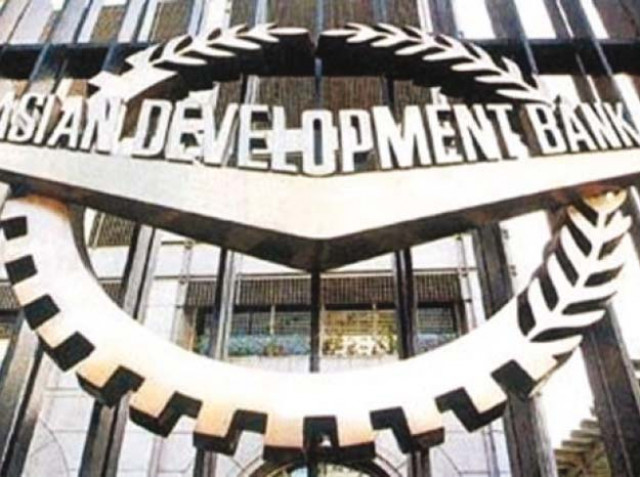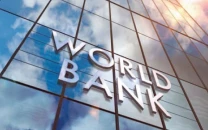Almost the same: ADB keeps Pakistan’s growth forecast at 4.5%
Manila-based lending agency does not see any change in macroeconomic conditions

The $6.6-billion IMF programme will end in September next year. Following that, post-programme monitoring reviews will begin, keeping the country effectively under the IMF radar. PHOTO: FILE
The Asian Development Bank (ADB) has kept its growth forecast for Pakistan unchanged at 4.5% for the new fiscal year, one-percentage point less than the official target, underscoring that there will be no change in macroeconomic conditions in the third year of the PML-N government.
The Manila-based lending agency has released its supplement to the Asian Development Outlook 2015, which was published in March. The lending agency does not see any change in macroeconomic conditions and said that growth forecasts for Afghanistan, Bhutan, Pakistan, and Sri Lanka are retained “as each economy stays its course”.
In its last publication, the ADB had projected that Pakistan’s economy would grow at a pace of 4.5% in 2016 and the pace of inflation was projected at 5.8%.
The ADB’s projections are in line with the International Monetary Fund (IMF) estimates that has also projected 4.5% growth rate in the new fiscal year.
Unlike the ADB’s projections of modest economic growth, the PML-N government has set an ambitious growth target of 5.5% for the new fiscal year 2015-16. However, the results of the previous two years suggest that the ADB’s projections are close to the actual results.
The PML-N government missed its economic growth targets for the last two years.
The ADB said that political factors present some downside risks to forecasts in the sub region, as a political transition in Sri Lanka causes private investors to take a wait-and-see approach to new investment, and political risk persists in Afghanistan and Pakistan.
One of the main reasons for subdued growth projections is that the government has not addressed structural issues, which are hampering sustainable growth. There is no notable progress in areas of energy, public sector enterprises and taxation that remain critical to the economic growth.
Due to the government’s inability to introduce energy reforms, the World Bank, the ADB and Japan delayed roughly $1 billion loans, which they had originally planned for approval before the end of June.
Various official and independent studies suggest that Pakistan requires at least 6% to 7% annual growth rate to create jobs for the youth and lower the unemployment rate.
Due to a modest growth rate of average 4% during the first two years of the PML-N government, the unemployment rate has jumped to a 13-year high of 8.3% by the end of last fiscal year, according to estimates of Planning Commission that have also been approved by the National Economic Council.
According to independent economists, the government’s heavy focus on stabilisation policies has suffocated economic growth. They do not see any change in the stance as long as Pakistan is under the IMF programme.
The $6.6-billion IMF programme will end in September next year. Following that, post-programme monitoring reviews will begin, keeping the country effectively under the IMF radar until it returns all the loans to the Washington-based global lender.
The ADB has cut its 2016 growth forecast for Developing Asia to 6.2% from 6.3%, amidst slower-than-expected economic activity in the United States and the People’s Republic of China (PRC).
“Slower growth in the People’s Republic of China is likely to have a noticeable effect on the rest of Asia given its size and its close links with other countries in the region through regional and global value chains,” said ADB Chief Economist Shang-Jin Wei. While weaker-than-expected external demand, a declining working age population and rising wages have contributed to a slower rate of growth in China.
Ongoing softness in the major industrialised economies (US, Japan, Euro Area) will see a slowdown in East Asia as a whole, with growth now at 6.2% in 2015, down from 6.5% forecast earlier, said the ADB.
In India, growth forecasts remain unchanged at 7.8% in fiscal year 2015 and 8.2% for fiscal year 2016, supported by a healthy monsoon and new investments. South Asia as a whole is now expected to grow 7.3% in 2015, up slightly from 7.2% seen earlier, with a better-than-expected economic performance in Bangladesh balancing the earthquake-related slowdown in Nepal.
Published in The Express Tribune, July 18th, 2015.
Like Business on Facebook, follow @TribuneBiz on Twitter to stay informed and join in the conversation.



















COMMENTS
Comments are moderated and generally will be posted if they are on-topic and not abusive.
For more information, please see our Comments FAQ